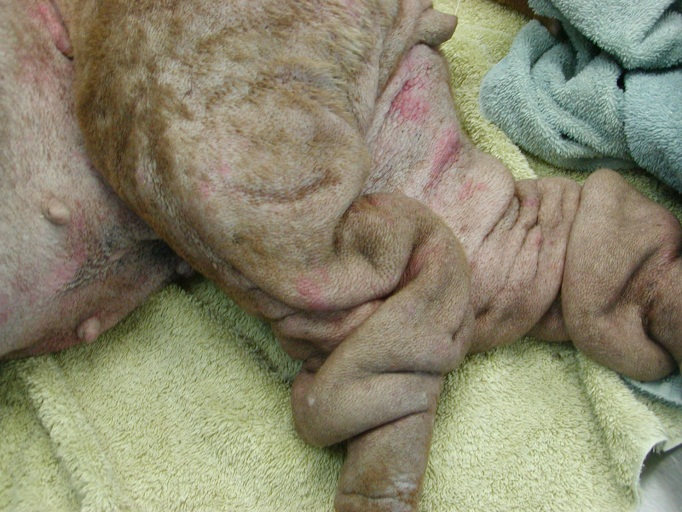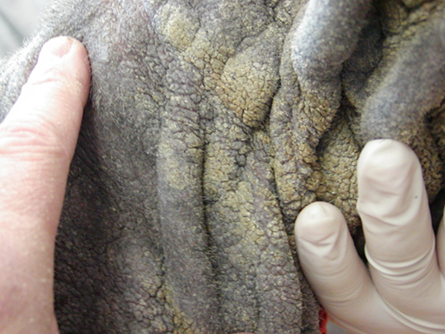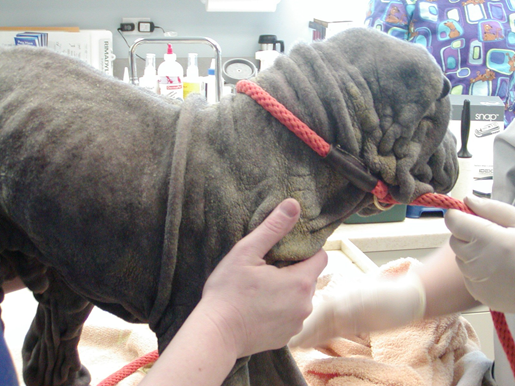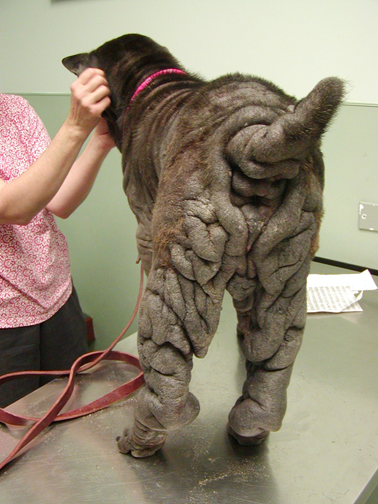Shar-Pei Triad Disease
Over the years in working with Chinese Shar-Pei I have seen severe skin disease characterized by lichenification (“elephant skin”), hyperpigmentation, thickened plaques or plates of skin, pruritis (itching), rancid skin odor, hair loss (alopecia) and seborrhea (oily skin) due to underlying allergic skin disease with secondary bacterial and Malassezia infection. I call it “SPTriad Disease” as these three skin diseases tend to occur together. The major underlying disease is allergic whether due to hay fever-type allergies, food allergies, flea bite dermatitis and/or contact allergies. I also feel it is possible for Shar-Pei to be “allergic to themselves” because of the presence of increase hyaluronan in their skin. We know that hyaluronan goes through a cycle of formation and degradation in Shar-Pei. If the breakdown of hyaluronan results in low molecular weight products these can stimulate inflammation. Whether the itching leads to increased hyaluronan degradation or vice versa is not known – I think both mechanisms occur. Treatment of this condition involves:
- Treatment for the underlying allergic disease – antihistamines, steroids, removal of the cause (food, fleas), cyclosporine,etc.
- Antifungal treatment for the Malassezia — I usually use ketoconazole.
- Antibiotic therapy
- HyVitality® — Dr. Linda Tintle’s formula to support the immune system and promote healthy hyaluronan.
- I use Dawn Dishwashing Liquid to bathe these guys twice a week for 2 weeks to start. It is a good de-greasing shampoo.
As the patient respond to treatment I try to eliminate the antibiotic and the antifungal therapy and concentrate on the allergy treatment. The disease may be seasonal but I have dogs who are on treatment all year ’round.



